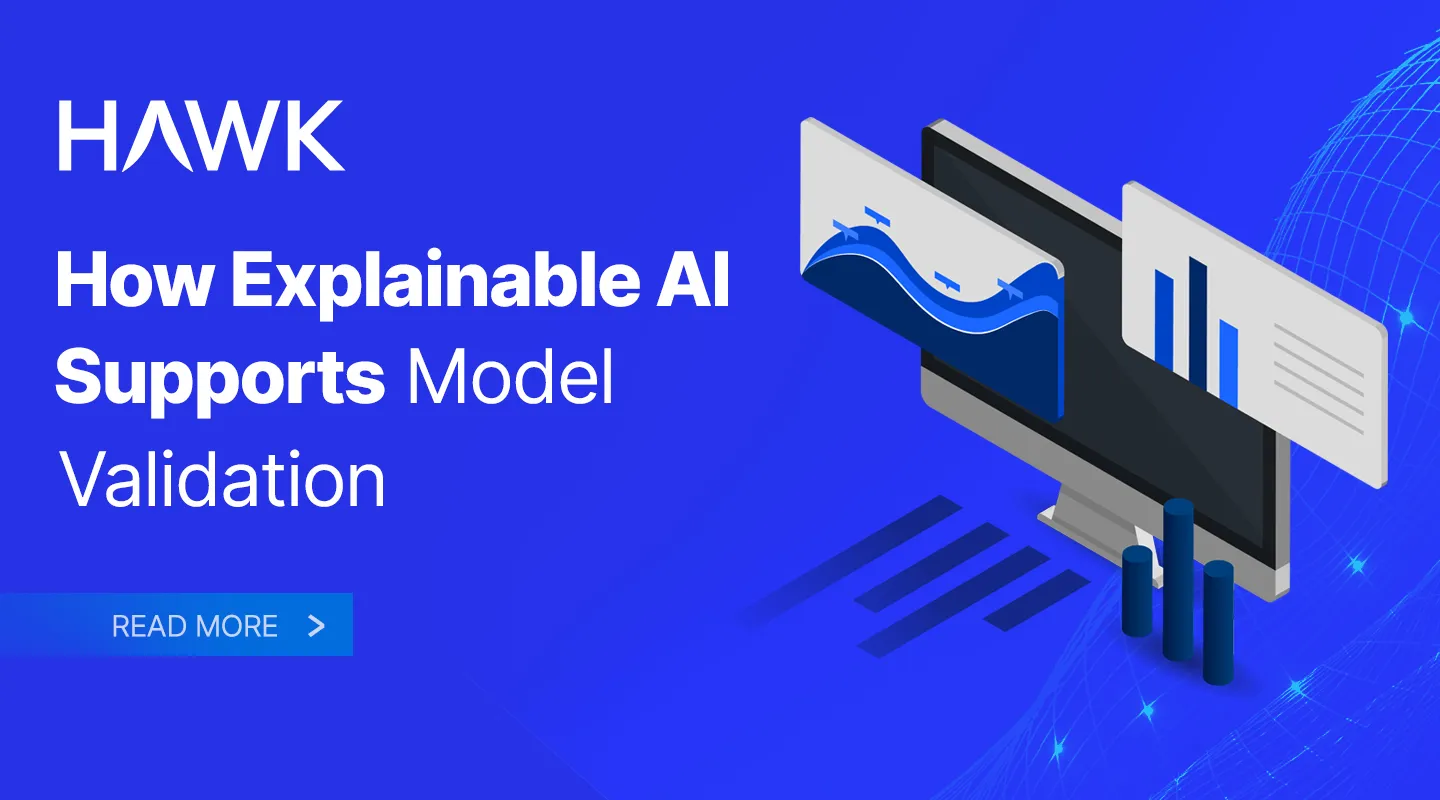How Explainable AI Supports Model Validation

AML model validation is an essential element of a model risk governance process. Hawk AI supports our clients to meet their obligations by providing evidence of the accuracy and effectiveness of our models.
In this article, we’ll discuss the following:
- What the AML Model Validation Process Looks Like
- How Hawk AI Contributes to AML Model Validation
- How Hawk AI Explains Its AI models
What Does the AML Model Validation Process Look Like?
Model validation is a mandatory model risk governance requirement for regulated financial institutions. It ensures the effectiveness, accuracy, and reliability of a bank’s AML systems. According to the Office of the Comptroller of the Currency’s (OCC) supervisory guidance, model validation should include three key elements:
- Evaluation of conceptual soundness: Assess the quality of the model design and construction. This stage involves reviewing documentation and evidence supporting the methods used and variables selected for the model.
- Ongoing monitoring: Confirm that the model is appropriately implemented and is being used and is performing as intended. This stage includes process verification and benchmarking.
- Outcomes analysis: Compare model outputs to corresponding actual outcomes. This stage might include tests of estimates, forecasts, or rank-ordering ability, depending on the model’s objectives.
How Does HAWK AI Contribute to AML Model Validation?
Banks and other financial institutions often acquire AML technology from third-party vendors. OCC supervisory guidance requires vendor products to be included within the scope of the model risk management framework. To appropriately validate these models, institutions need to understand how the vendor developed, tested, and validated the model. This allows them to assess whether the vendor model is appropriate for their environment.
To assist the process, Hawk AI supports regulated financial institutions in their model validation process with a fully explainable technology framework. In an independent validation, financial crime experts tested selected HAWK AI transaction monitoring and screening models, reviewed associated model documentation, and assessed the model evaluation processes. HAWK AI models received the highest rating with only minor observations which have been remediated.
This independent validation lays the foundation for our clients to demonstrate the conceptual soundness of their models and save time, resources, and money in addressing their model risk governance obligations.
How Does HAWK AI Explain Its AI models?
Financial institutions can see compelling benefits from using AI for financial crime detection. To use AI and machine learning technology for AML purposes, model validation requires model users to have a working domain knowledge of both AML compliance and data science. Without sufficient insight into how AI technology works, model users won’t be able to evaluate a model’s conceptual soundness, implementation, or decision outcomes.
Models that employ Explainable AI, in which the user clearly understands the model’s decisioning and rationale, facilitate the bridging of this gap in expertise. Explainable AI makes the decisions of the models transparent and understandable for AML compliance professionals and regulators alike. Hawk AI's explainable AI technology includes natural language narratives, decision probabilities and contextual valuation. These features give our clients the information they need to understand how an AI model works and conduct an effective AML model validation.
To learn more about Hawk AI’s AML technology, contact us today.